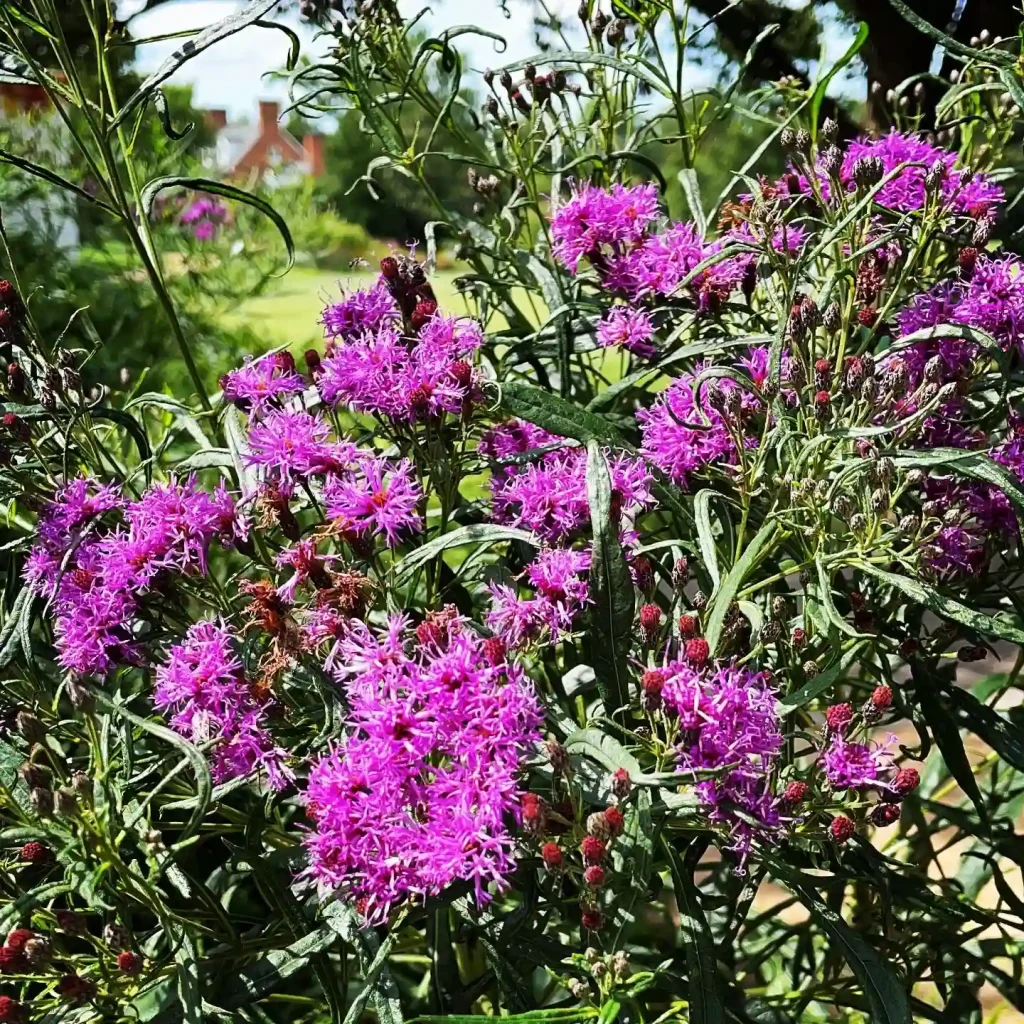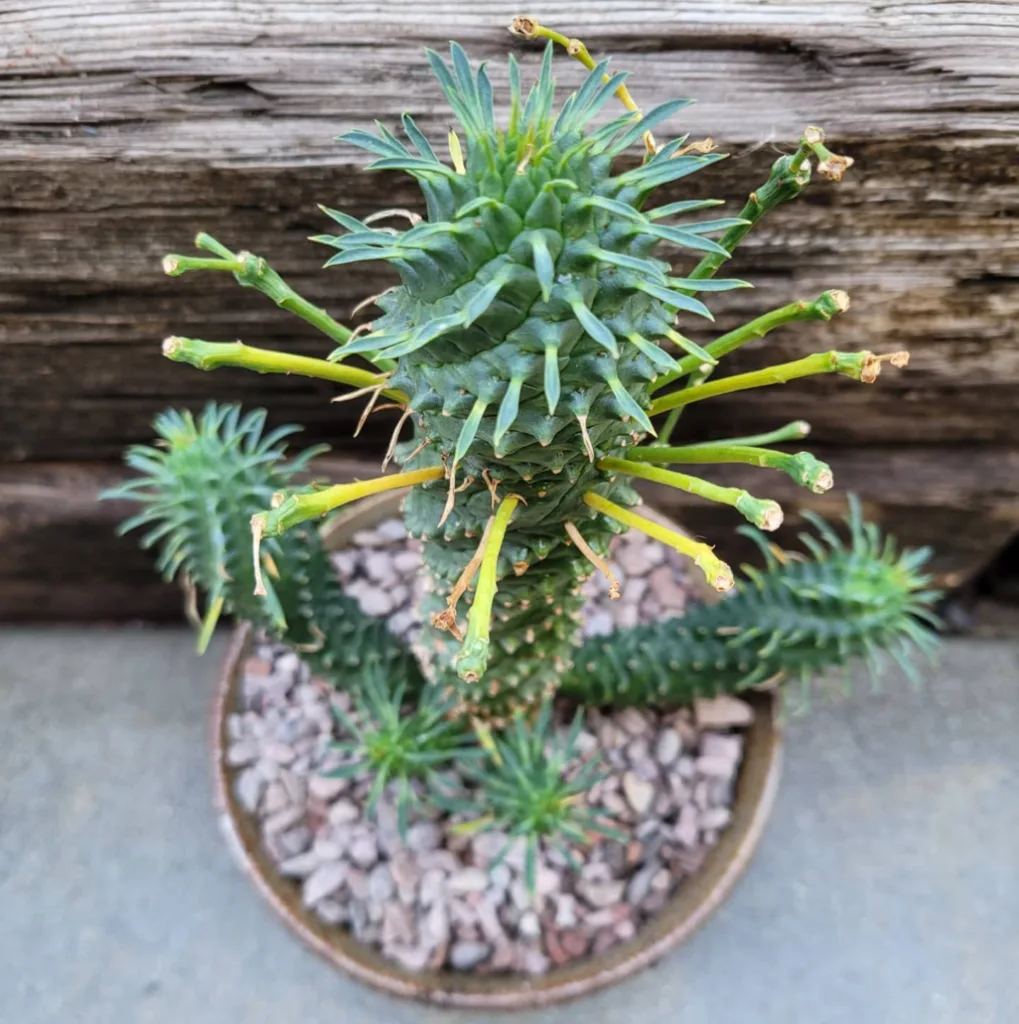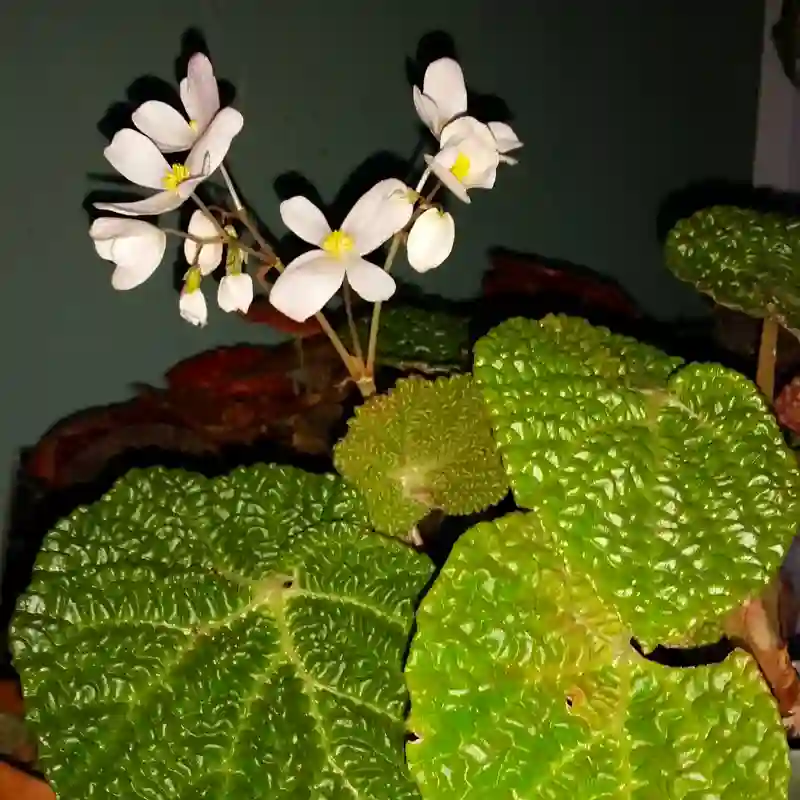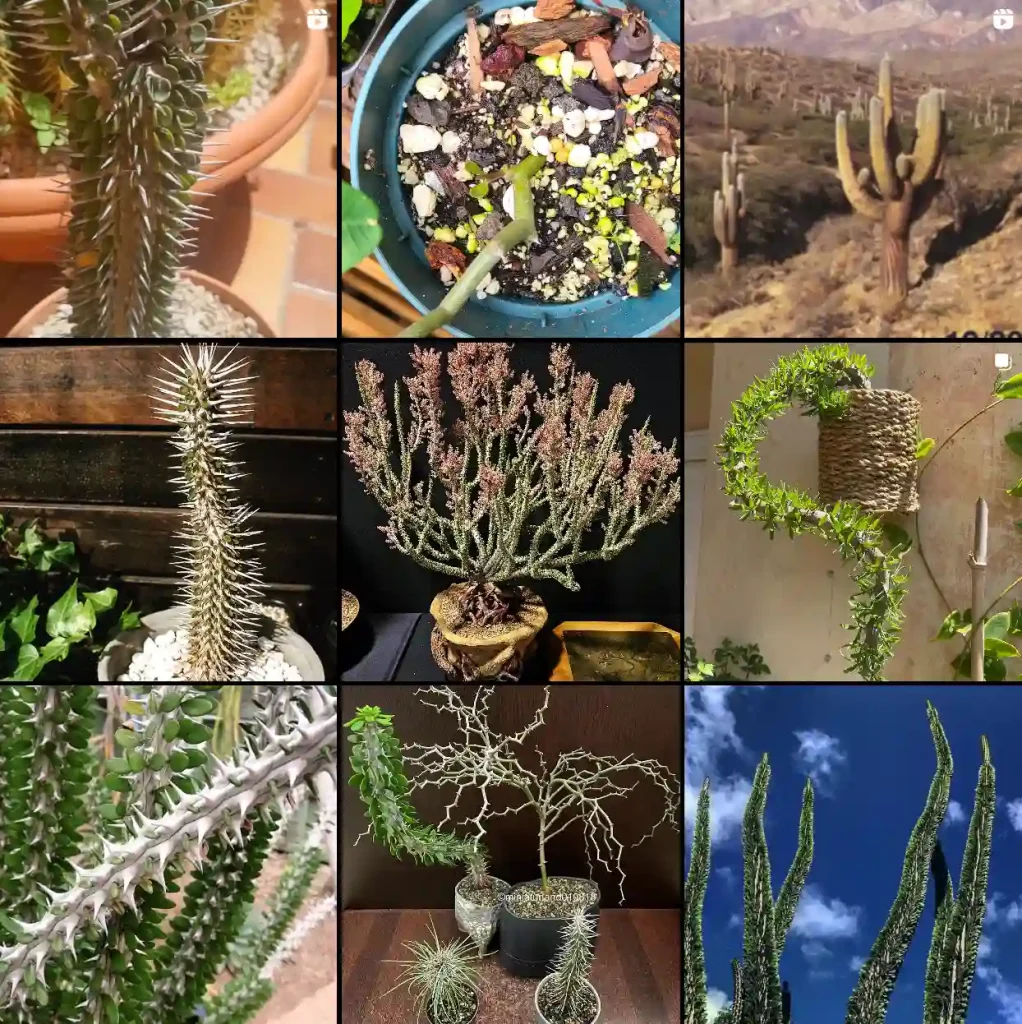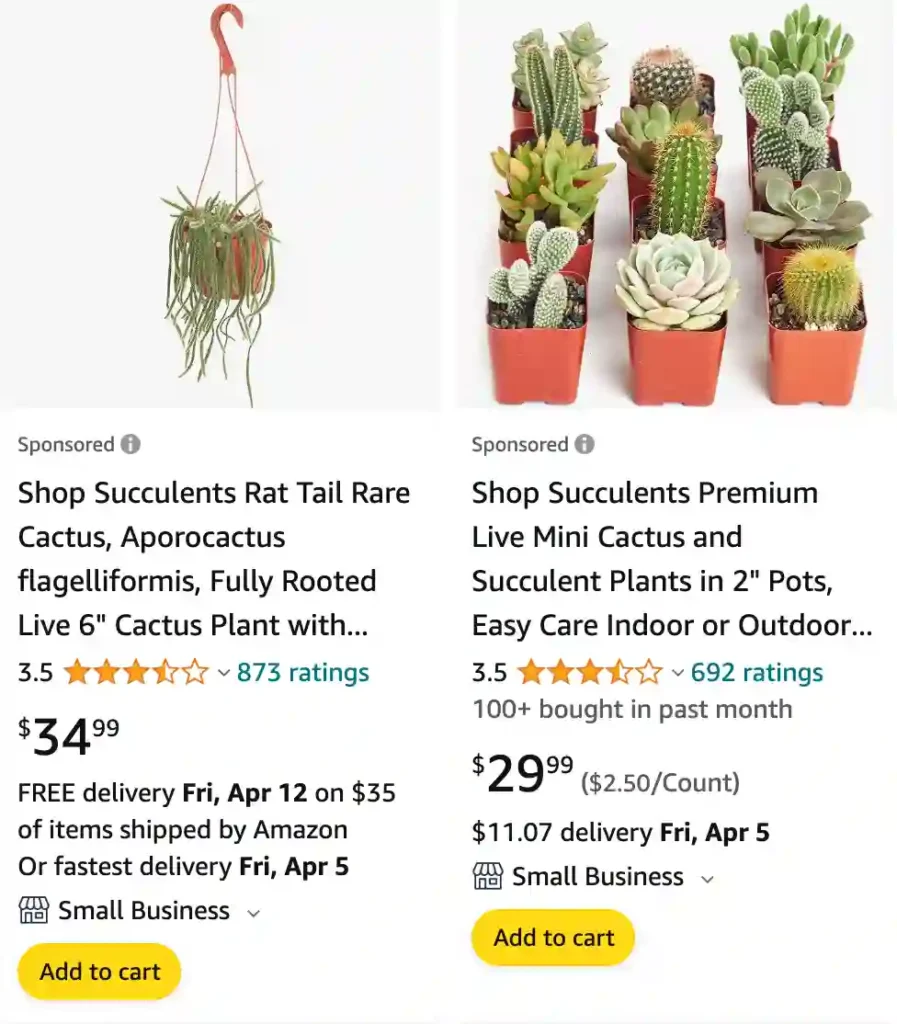
My Captivation with the Cactaceae Family
I’ve always been fascinated by the plant kingdom’s resilience, and no family embodies this quite like the Cactaceae. These remarkable succulents, commonly known as cacti or cactus, have adapted to some of the harshest environments on Earth, thriving in arid deserts and rocky terrains where few other plants dare to venture.
Unique Adaptations
The Cactaceae family has evolved a suite of adaptations that allow them to survive in water-scarce conditions. Their thick, fleshy stems are perfect for storing water, while their spines not only deter herbivores but also reduce water loss by creating a microclimate around the plant. Their shallow, extensive root systems are quick to absorb even the slightest rainfall.
Diversity in Form and Function
One of the most captivating aspects of the Cactaceae family is its incredible diversity. From towering columnar cacti like the majestic Saguaro to the diminutive, globular Mammillaria, these plants come in a wide array of shapes and sizes. Their flowers, often large and showy, add a burst of color to the arid landscapes they inhabit.
Genera of the Cactaceae Family
The Cactaceae family comprises a vast number of genera, each with its own unique characteristics and adaptations. Here are:
- Acanthocereus: This genus includes climbing or sprawling cacti with elongated stems and often large, nocturnal flowers.
- Carnegiea: This iconic genus is home to the Saguaro, the giant columnar cactus synonymous with the American Southwest.
- Echinocactus: These barrel-shaped cacti are known for their stout spines and slow growth. – 6 Species in Genus Echinocactus
- Ferocactus: As their name suggests, these cacti are heavily armed with formidable spines, providing excellent protection. – 30 Species in Genus Ferocactus
- Mammillaria: This diverse genus includes small, globular cacti with numerous tubercles and often colorful flowers. – 148 Species in Genus Mammillaria
- Opuntia: Commonly known as prickly pear cacti, these plants have flattened stems called pads and are often cultivated for their edible fruits. – 160 Species in Genus Opuntia
- Rebutia: These miniature cacti are popular among collectors for their compact size and vibrant flowers. – 3 Species in Genus Rebutia
- Cylindropuntia (Engelm.) F.M.Knuth – 52 Species in Genus Cylindropuntia
- Ariocarpus Scheidw. – 8 Species in Genus Ariocarpus
- Astrophytum Lem. – 6 Species in Genus Astrophytum
- Echinocereus Engelm. – 81 Species in Genus Echinocereus
- Myrtillocactus Console – 4 Species in Genus Myrtillocactus
- Rhipsalis Gaertn. – 45 Species in Genus Rhipsalis
- Parodia Speg. – 74 Species in Genus Parodia
- Gymnocalycium Pfeiff.ex Mittler – 69 Species in Genus Gymnocalycium
- Pilosocereus Byles & G.D.Rowley – 59 Species in Genus Pilosocereus
- Cleistocactus Lem. – 27 Species in Genus Cleistocactus
- Echinopsis Zucc. – 20 Species in Genus Echinopsis
- Espostoa Britton & Rose – 11 Species in Genus Espostoa
- Acanthocalycium Backeb.
- Acharagma (N.P.Taylor) Zimmerman ex Glass
- Airampoa Frič
- Aporocactus Lem.
- Armatocereus Backeb.
- Arrojadoa Britton & Rose
- Arthrocereus A.Berger
- Austrocactus Britton & Rose
- Austrocylindropuntia Backeb. – 7 Species in Genus Austrocylindropuntia
- Aylostera Speg.
- Aztekium Boed.
- Bergerocactus Britton & Rose
- Blossfeldia Werderm.
- Borzicactus Riccob.
- × Borzicana M.H.J.van der Meer
- Brachycereus Britton & Rose
- Brasilicereus Backeb.
- Brasiliopuntia (K.Schum.) A.Berger – Brasiliopuntia Brasiliensis in Genus Brasiliopuntia
- Browningia Britton & Rose
- Calymmanthium F.Ritter
- Castellanosia Cárdenas
- Cephalocereus Pfeiff.
- Cereus Mill. – 27 Species in Genus Cereus
- Chamaecereus Britton & Rose
- Chichimecactus Bárcenas, H.M.Hern. & P.Hern.-Led.
- Cipocereus F.Ritter
- Cochemiea (K.Brandegee) Walton
- Coleocephalocereus Backeb.
- Consolea Lem.
- Copiapoa Britton & Rose – 38 Species in Genus Copiapoa
- Corryocactus Britton & Rose
- Coryphantha (Engelm.) Lem. – 42 Species in Genus Coryphantha
- Cremnocereus M.Lowry, Winberg & Gut.Romero
- Cumarinia (Knuth) Buxb.
- Cumulopuntia F.Ritter
- × Cylindronia M.A.Baker, Majure, Cloud-H. & Rebman
- Deamia Britton & Rose
- Denmoza Britton & Rose
- Discocactus Pfeiff.
- Disocactus Lindl.
- Epiphyllum Haw. – 10 Species in Genus Epiphyllum
- Epithelantha F.A.C.Weber ex Britton & Rose
- Eriosyce Phil.
- Escontria Rose
- Espostoopsis Buxb.
- Eulychnia Phil.
- Facheiroa Britton & Rose
- Frailea Britton & Rose
- Geohintonia Glass & W.A.Fitz Maur.
- Grusonia F.Rchb. ex Britton & Rose
- Haageocereus Backeb.
- × Haagespostoa G.D.Rowley
- Harrisia Britton
- Hatiora Britton & Rose
- Isolatocereus Backeb.
- Jasminocereus Britton & Rose
- Kadenicarpus Doweld
- Kroenleinia Lodé
- Lagenosocereus Doweld
- Lasiocereus F.Ritter
- × Leia M.H.J.van der Meer
- Lemaireocereus Britton & Rose
- Leocereus Britton & Rose
- Lepismium Pfeiff. – 7 Species in Genus Lepismium
- Leptocereus (A.Berger) Britton & Rose
- Leuchtenbergia Hook.
- × Leucomoza M.H.J.van der Meer
- Leucostele Backeb.
- Leuenbergeria Lodé
- Lobivia Britton & Rose
- Lophocereus Britton & Rose
- Lophophora J.M.Coult. – 4 Species in Genus Lophophora
- Loxanthocereus Backeb.
- Lymanbensonia Kimnach
- Maihuenia Phil.
- Maihueniopsis Speg.
- Marshallocereus Backeb.
- Matucana Britton & Rose
- Melocactus Link & Otto – 52 Species in Genus Melocactus
- Micranthocereus Backeb.
- Mila Britton & Rose
- Miqueliopuntia Frič ex F.Ritter
- Mitrocereus (Backeb.) Backeb.
- Morangaya G.D.Rowley
- × Myrtgerocactus Moran
- Neoraimondia Britton & Rose
- Neowerdermannia Frič
- Nyctocereus (A.Berger) Britton & Rose
- Obregonia Frič
- × Opulea M.H.J.van der Meer
- Oreocereus Riccob.
- × Oreonopsis G.D.Rowley
- Oroya Britton & Rose
- × Pacherocactus G.D.Rowley
- Pachycereus (A.Berger) Britton & Rose
- × Patrocereus M.H.J.van der Meer
- Pediocactus Britton & Rose
- Pelecyphora C.Ehrenb.
- Peniocereus (A.Berger) Britton & Rose
- Pereskia Mill. – 4 Species in Genus Pereskia
- Pereskiopsis Britton & Rose
- Perucactus Pino & L.E.Alomía
- Pfeiffera Salm-Dyck
- × Polascontria Y.Cruz & S.Vázquez
- Polaskia Backeb.
- Praecereus Buxb.
- Pseudorhipsalis Britton & Rose – 6 Species in Genus Pseudorhipsalis
- Pterocactus K.Schum.
- Pterocereus T.MacDoug. & Miranda
- Punotia D.R.Hunt
- Quiabentia Britton & Rose
- Rapicactus Buxb. & Oehme
- Rauhocereus Backeb.
- Reicheocactus Backeb.
- Rhipsalidopsis Britton & Rose
- Rhodocactus (A.Berger) F.M.Knuth
- Salmonopuntia P.V.Heath
- Samaipaticereus Cárdenas
- Schlumbergera Lem. – 7 Species in Genus Schlumbergera
- Sclerocactus Britton & Rose
- Selenicereus Britton & Rose – 30 Species in Genus Selenicereus
- Serrulatocereus Guiggi
- Setiechinopsis Backeb. ex de Haas
- Soehrensia Backeb.
- Stenocactus (K.Schum.) A.Berger
- Stenocereus (A.Berger) Riccob. – 21 Species in Genus Stenocereus
- Stetsonia Britton & Rose
- Strombocactus Britton & Rose
- Strophocactus Britton & Rose
- Tacinga Britton & Rose
- Tephrocactus Lem. – 10 Species in Genus Tephrocactus
- Thelocactus (K.Schum.) Britton & Rose
- Trichocereus (A.Berger) Riccob. – 3 Species in Genus Trichocereus
- Turbinicarpus (Backeb.) Buxb. & Backeb.
- Uebelmannia Buining
- Vatricania Backeb.
- Weberbauerocereus Backeb.
- Weberocereus Britton & Rose
- Weingartia Werderm.
- Xiquexique Lavor, Calvente & Versieux
- Yavia R.Kiesling & Piltz
- Yungasocereus F.Ritter
Beyond the Desert
While cacti are often associated with deserts, they can be found in a variety of habitats, including grasslands, forests, and even coastal areas. Some species have even adapted to epiphytic life, growing on trees in tropical rainforests.
My Personal Connection
My fascination with cacti began in childhood, when I received a small potted cactus as a gift. I was captivated by its unique form and resilience, and I soon began collecting other species. Over the years, my collection has grown, and I now have a diverse array of cacti thriving in my home and garden.
Cacti in Culture
Cacti have played an important role in human culture for centuries. They have been used for food, medicine, and even as building materials. In many cultures, cacti are also revered for their spiritual significance.
Conservation Concerns
Unfortunately, many cacti species are facing threats due to habitat loss, over-collection, and climate change. It’s crucial that we take steps to protect these remarkable plants and ensure their survival for future generations.
FAQs
Can dogs eat cactus?
When my curious dog decided to take a bite out of a prickly pear cactus, I quickly realized that while the fruit might be okay in small amounts, the spines and other parts can cause a lot of pain and digestive issues.
How to remove cactus needles?
I remember the painful task of removing tiny cactus needles from my hand; using tweezers and duct tape worked best, but it was a tedious and uncomfortable process.
Is cactus a vegetable?
Although I once added cactus pads to a salad like a vegetable, I found out that botanically, they’re actually classified as fruits because they contain seeds.
Why is my cactus turning yellow?
When my cactus started turning yellow, I discovered it was due to overwatering, and I had to adjust my watering routine to let the soil dry out completely between waterings.
Are all succulents cactus?
I learned from tending to my diverse succulent collection that while all cacti are succulents, not all succulents are cacti; cacti have areoles from which spines grow, which many other succulents do not.
What animals eat cactus?
Watching a desert documentary, I was fascinated to see how animals like javelinas and tortoises skillfully navigate the spines to eat cacti for hydration and nutrients.
How long can a cactus live?
I was amazed to learn that some of the saguaros I saw on a trip to Arizona were over 150 years old, highlighting the incredible longevity of these resilient plants.
Do cactus need direct sunlight?
My cactus thrived after I moved it to a spot with plenty of direct sunlight, confirming that many cacti species need lots of sun to grow healthy and strong.
How long can a cactus go without water?
I once forgot to water my cactus for over a month, yet it remained perfectly fine, showing just how well these plants can store water and survive long periods of drought.
What does a cactus symbolize?
To me, the cactus symbolizes resilience and endurance, thriving in harsh environments where few other plants can survive, which I find incredibly inspiring.
When do cactus bloom?
My night-blooming cereus cactus amazed me when it suddenly burst into beautiful flowers one summer night, showing that cactus blooms can be rare but spectacular events.
How to save a rotting cactus?
When I noticed my cactus starting to rot, I cut away the affected parts and repotted it in dry, well-draining soil, successfully saving it from further decay.
Is tequila made from cactus?
While visiting a tequila distillery, I learned that tequila is actually made from the blue agave plant, which, although spiky, is not a cactus but a succulent.
What does cactus mean sexually?
I’ve come across “cactus” used in slang to imply that someone is unapproachable or difficult, though this use is more colloquial and not widely known.
What is cactus soil?
I always use a special cactus soil mix for my cacti, which is designed to provide excellent drainage and aeration, crucial for preventing root rot.
Why can camels eat cactus?
I was astonished to discover that camels can eat cacti thanks to their tough mouths and specialized digestive systems that can handle the spines and fibrous material.
Why is my cactus squishy?
The one time my cactus turned squishy, it was because of overwatering, leading to root rot, and I had to cut off the damaged sections to try and save it.
Can cactus survive the winter?
I’ve found that while some cacti can survive a mild winter outdoors, I usually bring mine inside or provide frost protection to prevent cold damage.
How to graft cactus?
Grafting cacti became a fun experiment for me; I carefully cut and joined different cactus species, and with some patience, they fused together beautifully.
What do cactus seeds look like?
Collecting seeds from my cactus flowers, I was surprised to see how tiny and numerous they were, looking almost like dust particles.
What is cactus leather?
I was intrigued to learn about cactus leather, a sustainable and eco-friendly alternative to animal leather made from the pads of the nopal cactus.
Why is my cactus turning white?
When my cactus started turning white, I realized it was getting sunburned from too much direct sunlight, so I moved it to a slightly shadier spot.
Can cactus and succulents be planted together?
Planting my cacti and succulents together in a shared pot has worked well, as long as I ensure they all have the same light and water requirements.
How to make cactus juice?
I once made cactus juice by blending the peeled pads of a prickly pear cactus with some water and straining the mixture; it was refreshing and surprisingly tasty.
Will bleach kill cactus?
In an attempt to sanitize a pot, I accidentally splashed bleach on a cactus, and it quickly showed signs of distress, proving bleach is harmful to cacti.
Cactus vs Cacti
When I started out with desert plants, I was a bit confused because I initially thought a cactus and cacti were the same thing, but I quickly learned that “cactus” is singular and “cacti” is just the plural form, so it’s more about terminology than a difference in the plants themselves.
Cactus vs Succulent
I used to mix up cacti and succulents, thinking they were interchangeable, but I found out that while all cacti are succulents (with their own special adaptations), not all succulents are cacti—so my collection expanded to include some lovely aloe and jade plants that aren’t cacti but still thrive in similar conditions.
Cactus vs Aloe
I’ve enjoyed having both cacti and aloe plants, but I’ve noticed that while cacti are all about spines and a no-fuss, water-saving approach, my aloe plants have been more forgiving with their soft, fleshy leaves and seem to thrive on a bit more attention and water.
Cactus vs Euphorbia
In my experience, cacti and Euphorbias can both add a unique touch to a garden, but I’ve found Euphorbias, despite their often spiky appearance, tend to have a bit more variety in shape and color compared to the classic round, ribbed look of most cacti.
Conclusion
The Cactaceae family is a testament to the power of adaptation and the beauty of nature’s diversity. These remarkable plants have captured my imagination and inspired me to appreciate the resilience of life, even in the most challenging environments. I encourage everyone to learn more about cacti and to support efforts to conserve these invaluable members of our planet’s biodiversity.
If i die, water my plants!
